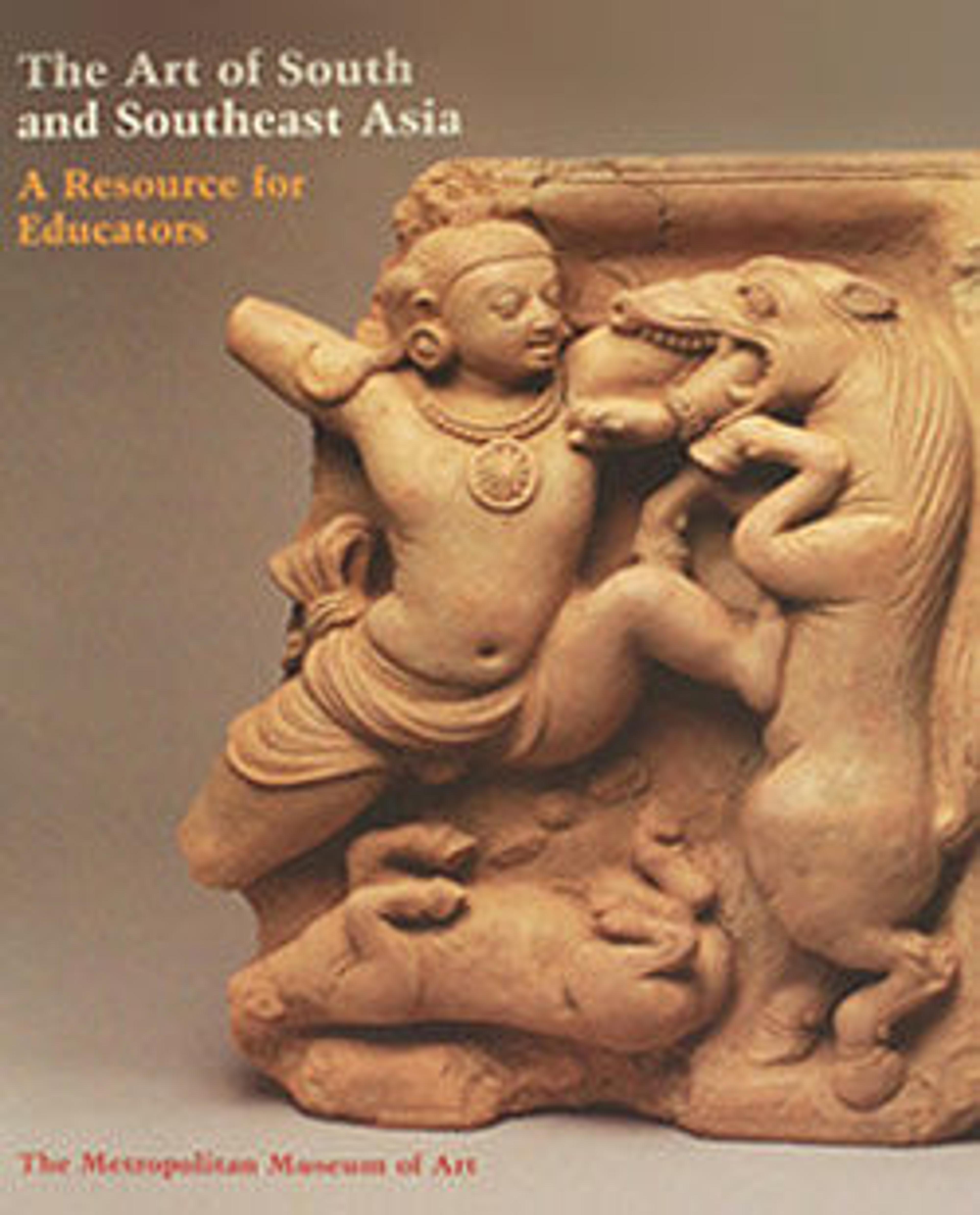Krishna on Garuda
This ensemble was part of a hanging oil lamp. Above Krishna's head is a lotus pattern to which a chain for suspension was attached, and beneath Garuda is a loop from which a cup for lamp oil would have hung. The lighted lamp would cast shadows of the god and his vehicle.
Artwork Details
- Title: Krishna on Garuda
- Period: Central Javanese period
- Date: second half of the 9th century
- Culture: Indonesia (Java)
- Medium: Bronze
- Dimensions: H. 15 7/16 in. (39.2 cm)
- Classification: Sculpture
- Credit Line: Purchase, Lita Annenberg Hazen Charitable Trust Gift, 1992
- Object Number: 1992.135
- Curatorial Department: Asian Art
Audio
8000. Krishna on Garuda
Gallery 247
Hindus on the isle of Java would have deciphered this complex late-ninth-century bronze at once. The childlike figure on top is Lord Krishna, an earthly avatar of Vishnu. Krishna holds Vishnu’s chakra, or discus, and points his left index finger in a gesture of warning. He balances on a figure who’s part man, part bird. This is Vishnu’s divine vehicle, Garuda. In a famous legend, Krishna and Garuda together stole the elixir of immortality from the gods. It is in the urn atop Garuda’s head and between Krishna’s legs. Garuda’s hands hold two dead snakes, one without a head. These nagas, or serpent-people, were the guardians of the divine elixir.
Garuda, king of the birds, was associated with the sun and became a symbol of the dawn. This piece originally was a lamp. It hung from a chain attached to the lotus blossom on Krishna’s head. A cup of oil hung underneath. The flames cast shadows on the walls and ceiling—especially from Garuda’s long, openwork tail.
More Artwork
Research Resources
The Met provides unparalleled resources for research and welcomes an international community of students and scholars. The Met's Open Access API is where creators and researchers can connect to the The Met collection. Open Access data and public domain images are available for unrestricted commercial and noncommercial use without permission or fee.
To request images under copyright and other restrictions, please use this Image Request form.
Feedback
We continue to research and examine historical and cultural context for objects in The Met collection. If you have comments or questions about this object record, please complete and submit this form. The Museum looks forward to receiving your comments.
